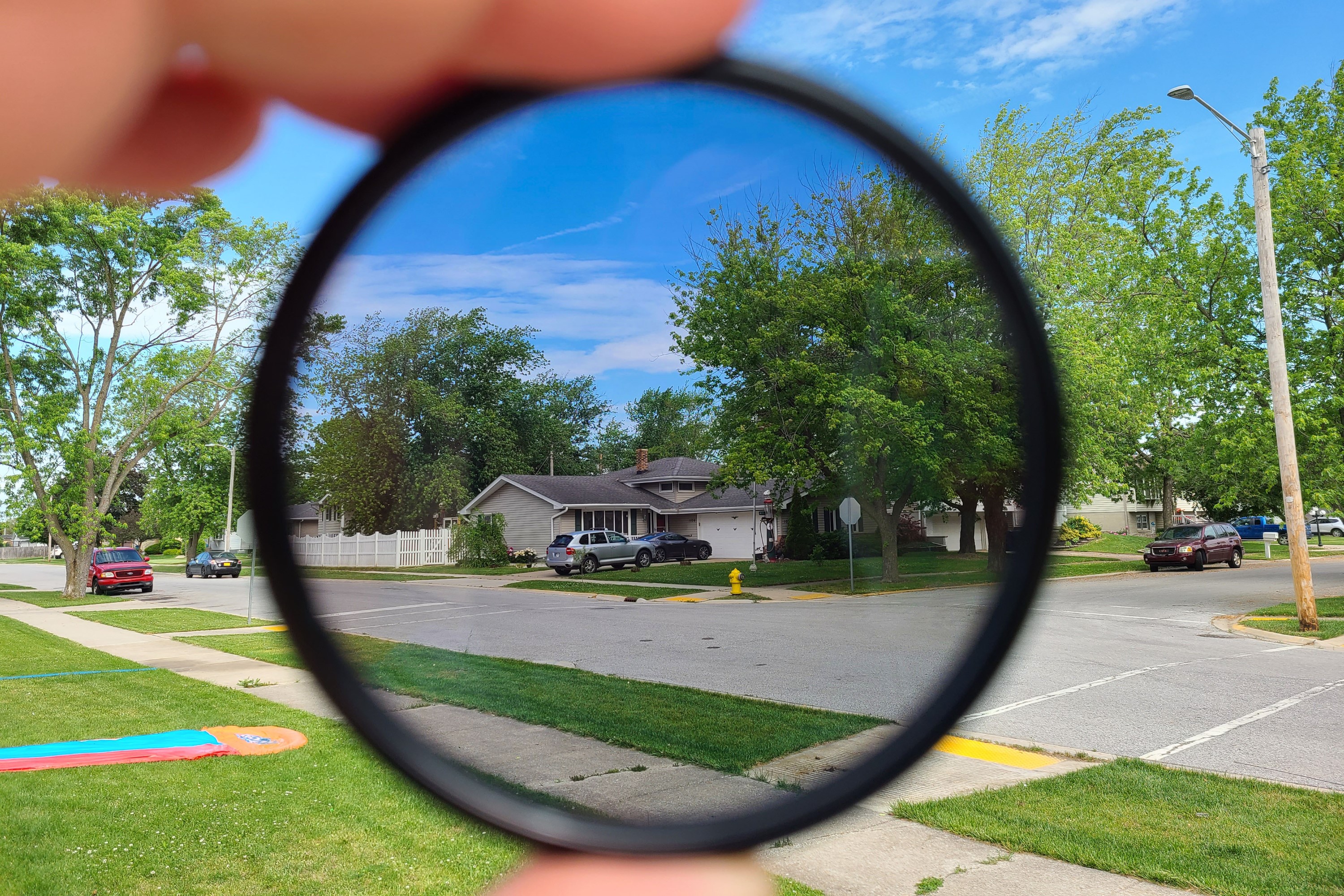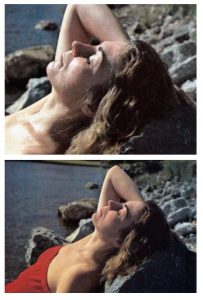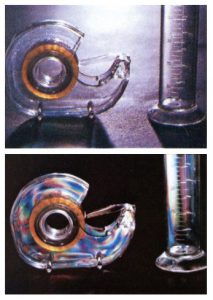Most people understand how lens filters work. Colored filters are used with black and white film to filter out specific wavelengths of the color spectrum to alter the contrast of the image, UV filters filter out ultraviolet light which in some lenses helps to reduce haze (and is also a great way to offer some protection on your lens’s front element), and finally neutral density filters restrict the amount of light passing through the lens, to allow for creative use to add blur to motion or use a wider aperture than a given amount of light would otherwise allow.
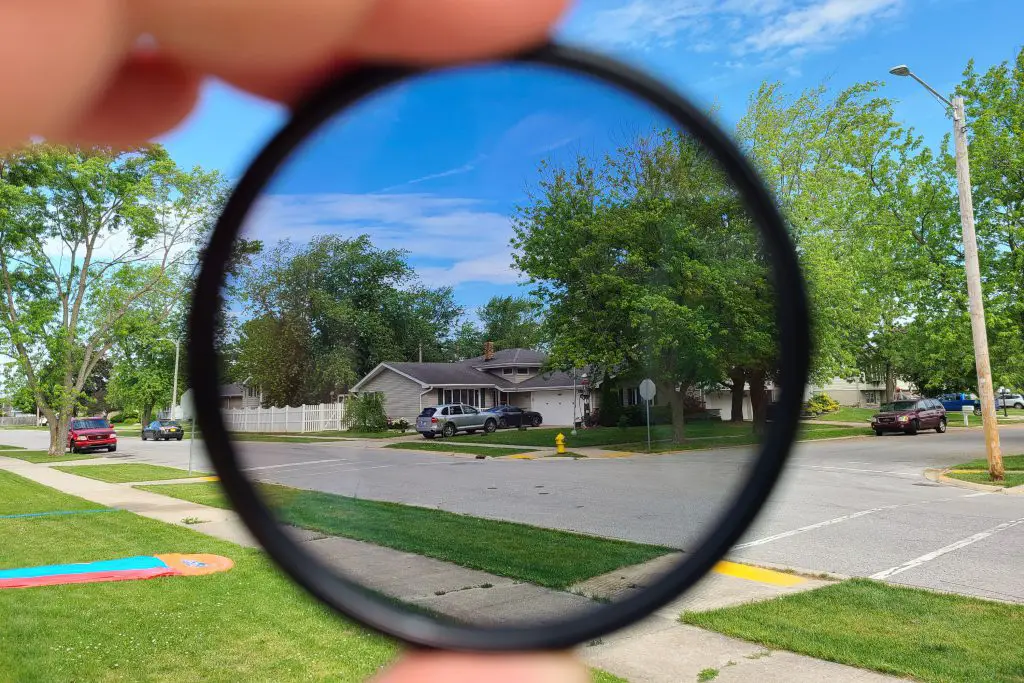
Of all the different kinds of lens filters, the one that seems to confuse people the most are polarizers. Light moves as a wave and those rays act differently when passing through a polarizer oriented one way versus another. Through creative use of polarizers, you can achieve effects such as darkening a blue sky, reducing glare on human skin, or enhancing iridescence in some plastics.
For most photographers, a complete understanding of the physics of light is not necessary to use a polarizer. The best way to learn how they work is just to get one and try it out for yourself and see what happens.
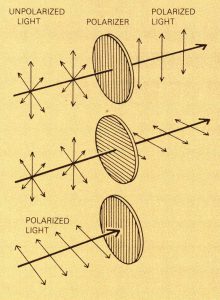
If you want to learn more about polarizers, I am sure there are a great deal of books or other online resources that explain how they work, but this being Keppler’s Vault, why not let a 36 year old 16 page article from the July 1985 issue of Modern Photography explain it!
In the simplest terms possible, light is either polarized or unpolarized. When it is polarized, the invisible rays of energy that we perceive as light are lined up in a specific direction. Unpolarized light is not lined up. A polarizing filter is one that only allows polarized light traveling in a specific direction to pass through. Since unpolarized light bounces in all directions, at least some of it lines up with the filter and can pass through. When light becomes polarized either by bouncing off a specific surface, travels in a specific direction, or is artificially polarized via another filter, the orientation of the filter restricts that light from passing through.
Since the human eye cannot detect polarized versus non polarized light, determining when these filters can be used is a bit of trial and error and the Modern Photography article tries to explain where this effect can mostly easily be used. On a bright sunny day, positioning a lens with a polarizing filter at a 90 degree angle from the direction of the sun has the best chance at capturing polarized light. Light reflecting off human skin, droplets of water, and certain plastics can also polarize light.
In the gallery above, we see three examples of scenes with and without a polarizer. Polarized light reflecting off a windshield can be filtered out to better show detail behind the glass, water droplets on a woman’s skin can be diffused giving her skin a vivid, almost velvet-like appearance, and in the case of the tape dispenser, an iridescent effect called birefringence is revealed with a polarizer.
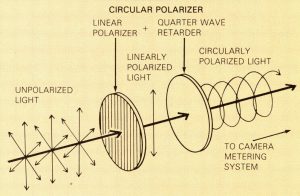
Polarizers can be generally grouped into two broad categories, linear and circular, and the article gives a good explanation about when one is needed versus another. In simple terms, both a linear and circular polarizer accomplish the same thing, filtering out light moving in certain directions. The problem with many SLRs however is that this filtering affect can negatively affect a camera’s ability to meter light and may also cause parts or even all of the viewfinder image to become filtered out as well. With a circular polarizer, a second filter called a ‘quarter wave plate’ takes the filtered light and spins it in a way that eliminates these unwanted in camera effects. In the article is a chart showing many SLRs of the era and which ones require one vs another.
There is a lot more to know about polarizers, how they work, and how they can be used. This article does an excellent job of not getting too technical, while showing the different effects polarizers can achieve while also explaining why it works. I’ll admit to having an early interest in polarizers in my early days of photography, but quickly losing interest in them, but this article has definitely reignited my interest and perhaps it will for you too!
All scans used with permission by Marc Bergman, 2021.

